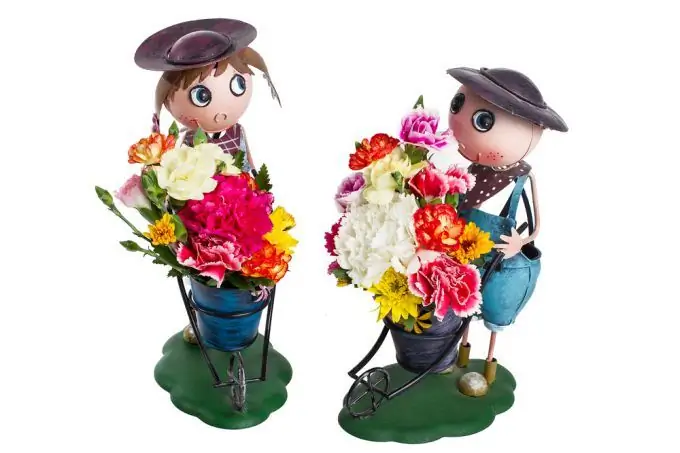Plaster products are able to revive any interior, give it individuality. Especially if they are not made at the factory, but independently - according to your own sketch. The technology for their creation is not that complicated.

There are two principles of action when making your own plaster products. The first is the fill. The option is laborious, requiring the creation of a prototype model (made of wood, plasticine, clay) and a mold for filling, but it allows you to create beautiful volumetric shapes. The second way is plaster carving. It is more suitable for creating decorative flat ornaments. Of the tools, you only need a sketch drawing, an awl and a good knife or scalpel.
As a "model" for creating a mold for filling with plaster, you can use a ready-made product you like (for example, a figurine). It is carefully lubricated with petroleum jelly or silicone grease and laid on a flat surface (covered or otherwise protected), a wooden or steel frame is made around it, which is also lubricated so that the future form does not stick. Then a plaster solution of the consistency of thick sour cream is poured into the frame, taking into account that the model can be removed from the mold after drying.
If the model for creating the form was made by yourself, it must be strong, dried, varnished.
When the solution has hardened, the model is taken out. The future form is thoroughly dried, defects are neutralized (for example, pits from air bubbles) using the same plaster solution, varnished from the inside. After the varnish has dried, the mold is ready to be filled with plaster to create the final product, but remember to clean and lubricate it before each new fill. Figures of complex shape are most often assembled from several parts, cast separately.
It is most convenient to fill the mold in two stages: first, a thin layer that fills all small cavities, then the bulk. If the product is large, it will be useful to strengthen it with reinforcement. The finished figure lends itself well to coloring. For final processing, it is advisable to cover it with a layer of wax or varnish.
Relief plates, ornaments, decorative inserts are more convenient to carry out by carving on plaster.
To create a sketch of the future ornament, you will need thick drawing paper (if the elements are repetitive, it will be convenient to fold it several times). The contours of the future pattern are drawn on it and punctures are made along the line at some distance from each other with an awl or needle. A frame of the required size (about 3 cm high) is placed on a flat, protected surface.
Gypsum is poured in two stages. The first layer, filling the mold by two thirds, is prepared in a ratio of 2 parts of gypsum to 3 parts of water. Pour it (without stirring) when it acquires the consistency of sour cream. The second layer is prepared in the same proportion, but kneaded very thoroughly. The upper part is poured 10 minutes after the first, wiping the hardened surface with a damp cloth.
After 10-15 minutes, removing the interfering slats, you can transfer the pattern to the surface of the plaster. To do this, a sheet with punctures is evenly laid on a gypsum blank and sprinkled with dry pigment (waking up through the holes, it forms a dotted pattern). With a scalpel or knife on the plaster, a cut is carefully made parallel to the pattern (with an indentation of 2-3 mm towards the "background"), then the layers of the background are carefully removed with the same knife so that the ornament protrudes.






